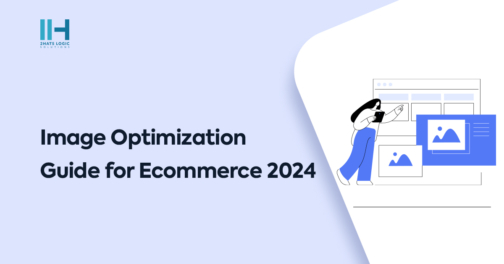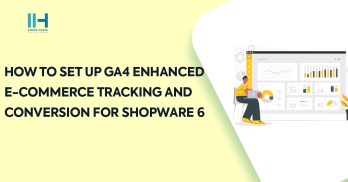Greetings! I'm Aneesh Sreedharan, CEO of 2Hats Logic Solutions. At 2Hats Logic Solutions, we are dedicated to providing technical expertise and resolving your concerns in the world of technology. Our blog page serves as a resource where we share insights and experiences, offering valuable perspectives on your queries.

Are slow-loading product images frustrating your online customers? Image optimization is the solution you’ve been searching for. The significance of image optimization cannot be overstated in ecommerce SEO. This foundational practice is instrumental in enhancing the performance and appeal of online stores. From expediting website loading times to elevating user satisfaction, image optimization is the cornerstone of a seamless digital shopping experience. Check out our image optimization guide.
What is the concept of Image optimization?
Image optimization for online stores includes a suite of techniques aimed at refining visual content for optimal display and efficiency. Through meticulous compression, format selection, and metadata refinement, online retailers can ensure that their product imagery captivates audiences while maintaining fast website functionality.
Join us as we delve into the role and practices for image optimization. And understand why it is significant to take the necessary steps for it.
Image Optimization
Definition- Image optimization refers to the process of refining visual content, such as product images, to ensure optimal display and loading speed.
Factors influencing website speed and performance include large, uncompressed images, server response times, and network conditions. By addressing these factors and implementing image optimization techniques like compressing file sizes and refining metadata, website owners can improve user experience and engagement.
Why do websites need pictures?
In e-commerce, images play a pivotal role in conveying product information and enticing customers. High-quality, visually appealing images can significantly impact purchase decisions and contribute to the success of an online store.
Therefore, effective image optimization is essential for maximizing the impact of images on e-commerce websites and optimizing the shopping experience for customers. Additionally, integrating social media like Instagram and Facebook images onto your website can enhance visibility and engagement. This further amplifies the reach and appeal of your online store while maintaining proper website speed optimization.
Benefits of Image Optimization
Image optimization offers a plethora of benefits to online businesses, enhancing various aspects of website performance and user interaction.
1. Page Loading Times
By reducing the file size of images through optimization techniques like compression and format selection, websites can load more quickly. This swift loading enhances user experience by minimizing wait times, thereby reducing bounce rates and increasing the likelihood of visitors staying on the site.
2. Improved SEO Rankings
Optimized images contribute to better search engine optimization (SEO) rankings. Search engines prioritize websites that offer fast loading times and high-quality content, including images.
3. User Experience and Engagement
Crisp, visually appealing images capture users’ attention and create a positive browsing experience. Optimized images ensure that users can effortlessly view and interact with product visuals, leading to increased engagement and longer time spent on the site.
4. Increased Conversion Rates and Sales
High-quality, optimized images are instrumental in influencing purchasing decisions. Clear product imagery helps customers make informed choices, leading to higher conversion rates. Additionally, fast-loading pages contribute to a seamless checkout process, reduce cart abandonment rates, and ultimately boost sales.
Best Methods for Image Optimization
Image Formats JPEG, PNG, and WebP image formats are compared.
PNG is best for images with transparency or crisp edges, JPEG is best for photos and images with plenty of colours, and WebP is best for effective compression without sacrificing quality.
Based on the purpose and content of the image, select the suitable format. For important photographs, prioritize quality; for background or ornamental images, choose reduced file sizes.
Image Compression
Image compression helps reduce image file size, improving website loading times. It’s crucial for maintaining a balance between image quality and performance.
Image Dimensions and Resolutions
Choose dimensions that suit your website layout and ensure images are clear and recognizable. Balance resolution to avoid oversized images that slow down loading times.
- Adjusting resolutions
Use responsive design principles to adjust image resolutions dynamically based on the user’s device, ensuring optimal viewing quality on various screen sizes.
Image Alt Text and Descriptions
Alt text provides textual descriptions of images, aiding visually impaired users and improving SEO by providing context to search engines.
- Descriptive alt text for images
Craft concise, descriptive alt text that accurately represents the image and includes relevant keywords to enhance SEO performance.
Lazy Loading
By delaying the loading of offscreen images until they are required, lazy loading speeds up page loads and saves bandwidth.
- Techniques of implementation
Implementation techniques include making sure images load gradually as users scroll, enhancing the user experience, and implementing slow-loading image capability using JavaScript libraries or frameworks.
Tools for Image Optimization
Online Tools
TinyPNG
A popular web tool for maintaining image quality while reducing the size of PNG and JPEG files.
Compressor.io
One more web tool that provides different image formats with lossless and lossy compression.
Kraken.io
A platform for online image optimization that offers strong compression techniques and mass image processing.
Offline Tools
Adobe Photoshop
A popular software for image editing and optimization, offers significant features to adjust image dimensions, resolution, compression, and more.
ImageOptim
A free desktop application for macOS that optimizes images by removing unnecessary metadata and compressing files.
FileOptimizer
An offline tool available for Windows that optimizes various file types, including images, by reducing their size without compromising quality.
Content Delivery Networks (CDNs)
CDNs play a crucial role in optimizing image delivery by caching content on servers closer to users, reducing latency and improving loading times.
Popular CDN providers like Cloudflare, Amazon CloudFront, and Akamai offer robust solutions for e-commerce websites. These providers offer features such as image optimization, SSL support, and DDoS protection, catering to the specific needs of online stores.
Page Speed Testing Tools
- Google PageSpeed Insights: A free Google tool that examines a page’s content and provides recommendations for speeding it up.
- GTmetrix: Another free tool for evaluating a website’s speed performance is GTmetrix. It offers thorough information on a range of performance indicators, such as request volume, page size, and load time.
- Pingdom Website Speed Test: The website load time is analyzed by Pingdom’s speed test tool, which also offers performance insights such as a breakdown of page elements and their corresponding load durations.
- WebPageTest: Using actual browsers and numerous locations worldwide, users can test a website’s performance with WebPageTest, an open-source application. To assist in identifying speed problems, it offers a range of performance indicators, filmstrip views, and comprehensive waterfall charts.
- Lighthouse (Chrome DevTools): Lighthouse is an automated tool integrated into Google Chrome’s DevTools. It audits web pages for performance, accessibility, progressive web app characteristics, and more.
Future Trends in Image Optimization
Artificial intelligence and effective machine learning algorithms have the potential to completely transform. This image optimization technique automatically adjusts to the tastes and behaviors of users. Personalized picture distribution made possible by predictive analytics will increase user engagement by meeting their specific needs. Furthermore, the combination of virtual reality (VR) and augmented reality (AR) technologies will transform product visualization in the e-commerce space, requiring optimization tactics that are specific to immersive experiences. In this regard, the development of image optimization emphasizes how important it is to constantly innovate and adapt to provide a smooth and fulfilling user experience.
Final Thoughts
Image optimization is significant for online store owners seeking to enhance website performance. Both website and mobile optimisation are required for online stores. By prioritizing image optimization, businesses can get benefits, including faster loading times, improved SEO rankings, enhanced user experience, and ultimately, increased conversions and sales. Following advanced image optimization techniques ensures that your online store stands out in a competitive digital world. As e-commerce development continues to evolve, investing in image optimization remains a cornerstone for achieving sustainable success. Don’t delay – prioritize image optimization today and take your online store to new heights of performance and profitability.

Related Articles






